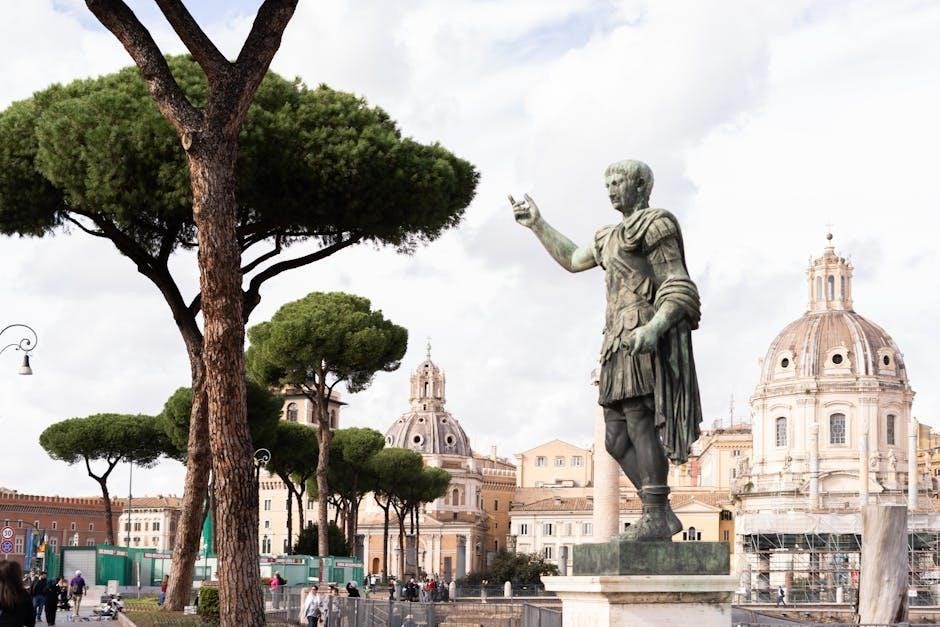A World History Timeline PDF provides a structured overview of major events, from ancient civilizations to modern times, offering a clear and accessible format for educational purposes.
1.1 Importance of Historical Timelines
Historical timelines are essential tools for understanding the progression of events across different eras. They provide a visual and chronological framework, making complex historical data accessible and organized. By highlighting key events, timelines help identify patterns, causes, and effects, fostering a deeper comprehension of historical context. For educators and students, timelines simplify lesson planning and learning, offering a structured approach to studying the past. Additionally, they serve as valuable resources for researchers, enabling quick reference to significant dates and developments. The availability of world history timelines in PDF formats ensures clarity and portability, making them indispensable for both academic and personal enrichment.
1.2 Purpose of a World History Timeline
The primary purpose of a world history timeline is to present a comprehensive and organized overview of significant events across various regions and periods. It aims to connect historical occurrences, illustrating how different civilizations and events have shaped the modern world. By providing a chronological structure, timelines facilitate the identification of global patterns and interconnections. They serve as educational tools, aiding students and educators in teaching and learning complex historical narratives. Additionally, timelines offer a quick reference for researchers and enthusiasts, enabling them to trace the evolution of cultures, technologies, and ideologies. The PDF format enhances accessibility, ensuring that these timelines are both portable and easily shareable for widespread use.
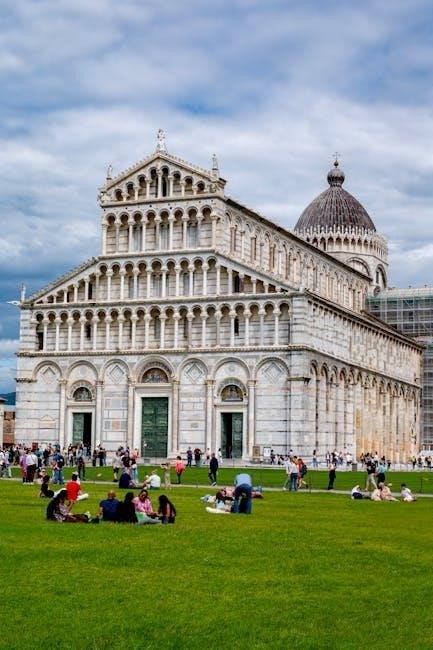
Ancient Civilizations
Ancient civilizations, such as Mesopotamia, Egypt, and the Indus Valley, laid the foundation for human progress through innovations in agriculture, writing, and urbanization, shaping early societies profoundly.
2.1 Mesopotamia and the Cradle of Civilization
Mesopotamia, often called the “Cradle of Civilization,” was a region in ancient Iraq where significant advancements emerged. It is renowned for the invention of writing (cuneiform), the creation of the wheel, and the development of sophisticated irrigation systems. The Sumerians, Akkadians, Babylonians, and Assyrians flourished here, leaving legacies in law, governance, and architecture. The Code of Hammurabi, one of the earliest written legal codes, originated in this region. Mesopotamia’s contributions to mathematics, astronomy, and literature were unparalleled, shaping the foundation of modern civilizations. The timeline of world history highlights Mesopotamia as a pivotal starting point for human progress, with its innovations influencing subsequent cultures and empires. Its legacy remains a cornerstone in the study of ancient history.
2.2 Ancient Egypt and Its Contributions
Ancient Egypt stands as a cornerstone of early civilization, renowned for its monumental architecture, advanced medicine, and sophisticated hieroglyphic writing system. The construction of the pyramids, particularly the Great Pyramid of Giza, showcased their engineering prowess and religious devotion. Egyptian society made significant strides in mathematics, astronomy, and law, with contributions like the 365-day calendar and early surgical practices. The unification of Upper and Lower Egypt under pharaohs like Menes and Ramses II marked pivotal moments in their history. The Great Library of Alexandria later became a hub of knowledge, preserving ancient texts. Egypt’s cultural and technological advancements left a lasting legacy, influencing future civilizations and shaping the timeline of world history.
2.3 The Indus Valley and Early Urbanization
The Indus Valley Civilization, flourishing around 2500 BCE, is renowned for its advanced urban planning and architectural innovations. Cities like Harappa and Mohenjo-Daro featured grid layouts, sophisticated drainage systems, and standardized brick construction, reflecting a high level of civic organization. The civilization excelled in craftsmanship, producing intricate seals, pottery, and jewelry. Trade networks extended to Mesopotamia, with evidence of exchange in goods like cotton and precious stones. Agricultural prosperity, based on crops such as wheat and barley, supported a thriving economy. The Indus Valley’s emphasis on hygiene and urban design set a benchmark for early civilizations, while its script, though undeciphered, suggests a complex administrative and cultural system. This civilization’s legacy is a testament to early human ingenuity and societal development.
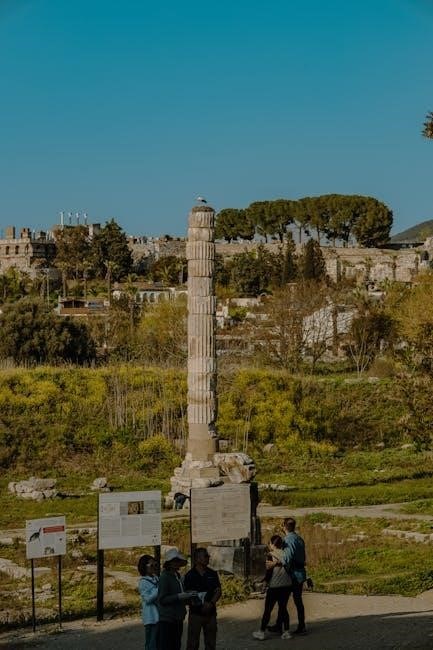
Classical Period
The Classical Period saw the rise of Ancient Greece and Rome, shaping Western civilization through philosophy, democracy, theater, and law, while Roman expansion spread governance and culture.
3.1 Rise of Ancient Greece and Rome
Ancient Greece emerged as a cornerstone of Western civilization, with city-states like Athens and Sparta fostering democracy, philosophy, and the arts. The rise of Rome followed, marked by military expansion and the establishment of a vast empire. Greece’s contributions included theater, democracy, and philosophy, while Rome developed legal systems, infrastructure, and governance. Both civilizations left enduring legacies in law, architecture, and culture. PDF timelines highlight key events, such as the Golden Age of Athens and the Roman Republic’s expansion, showcasing their transformative impact on world history. These resources provide a clear and accessible way to explore the chronology of these influential civilizations.
3.2 Contributions to Philosophy, Science, and Law
Ancient Greece and Rome laid the foundation for philosophy, science, and law. Greek philosophers like Socrates, Plato, and Aristotle shaped Western thought, while scientists such as Archimedes advanced mathematics and engineering. Rome adapted Greek knowledge, developing legal systems like the Corpus Juris Civilis, which influenced modern law. PDF timelines highlight these contributions, detailing milestones like Aristotle’s scientific works and the establishment of Roman legal frameworks. These resources provide a chronological overview of how ancient ideas continue to shape contemporary philosophy, science, and governance, offering a clear and accessible way to explore their enduring legacy.
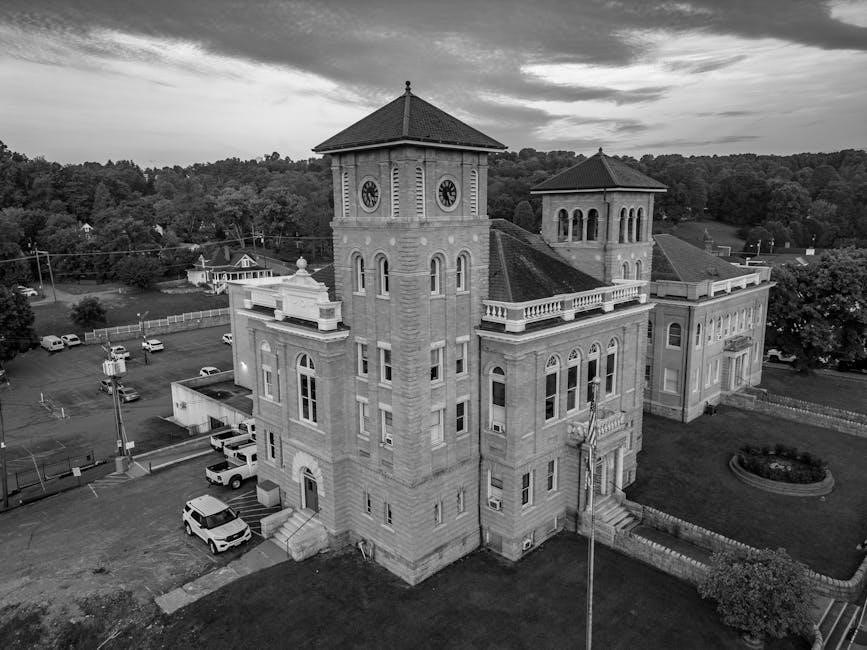
Medieval Period
The medieval period saw the rise of feudalism in Europe, the dominance of the Catholic Church, and the impact of the Crusades and the Black Death.
4.1 The Middle Ages in Europe
The Middle Ages in Europe, spanning from the 5th to the 15th century, were marked by the rise of feudalism, the dominance of the Catholic Church, and the decline of centralized authority. Following the fall of the Roman Empire, Europe fragmented into smaller kingdoms and fiefdoms, with lords and vassals forming hierarchical structures. The Church played a central role in governance, education, and culture, while monasteries preserved ancient knowledge. The period also saw the rise of trade guilds, the emergence of universities, and the construction of Gothic cathedrals. The Crusades and the Black Death were pivotal events, shaping Europe’s political, social, and economic landscapes. By the late medieval period, the seeds of the Renaissance and the decline of feudalism were sown.
4.2 The Islamic Golden Age and Its Impact
The Islamic Golden Age, spanning the 8th to the 14th century, was a period of remarkable cultural, scientific, and intellectual growth in the Islamic world. Centers like Baghdad and Córdoba became hubs of learning, where scholars preserved and expanded upon ancient Greek and Roman knowledge. Breakthroughs in mathematics, astronomy, medicine, and philosophy emerged, with figures like Al-Khwarizmi and Ibn Sina making lasting contributions. This era also saw advancements in engineering, architecture, and the arts. The Islamic Golden Age not only enriched the Islamic world but also influenced the Renaissance in Europe and laid the foundation for modern scientific inquiry, fostering a global exchange of ideas and cultures.
4.3 Feudalism in Japan and Europe
Feudalism emerged in both Japan and Europe as a social and political system, though it developed differently in each region. In Europe, feudalism arose during the Middle Ages, creating a hierarchical structure with lords granting land to vassals in exchange for loyalty and military service. Japan’s feudal system, known as “shōen,” began in the 12th century, with samurai serving daimyō (feudal lords) under the shogunate. Both systems emphasized loyalty, honor, and a rigid class hierarchy. While European feudalism declined with the rise of nation-states, Japan’s persisted until the 19th century. Despite differences, both systems shaped governance, economy, and culture, leaving lasting legacies in their respective societies.
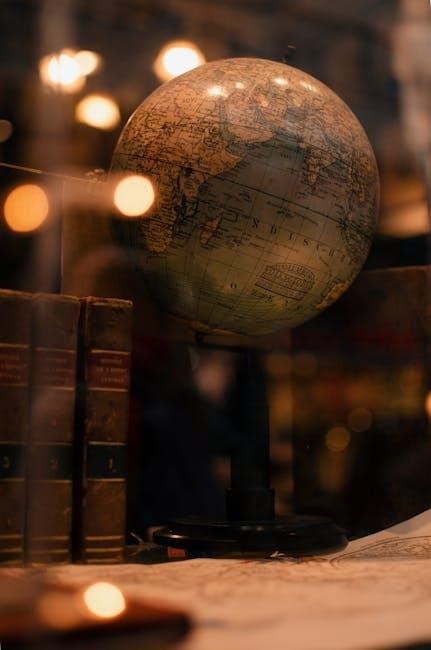
The Age of Exploration and Colonization
European nations like Portugal and Spain pioneered global exploration, driven by trade, resources, and religious motives, reshaping world maps and fostering cultural exchanges.
5.1 European Voyages and Discoveries
European explorers, driven by the quest for trade routes, resources, and religious missions, embarked on daring voyages during the Age of Exploration. Christopher Columbus’s 1492 journey sparked the discovery of the Americas, while Vasco da Gama reached India in 1498, establishing a sea route to Asia. Ferdinand Magellan’s circumnavigation of the globe (1519–1522) demonstrated Earth’s roundness and expanded European influence. These voyages were facilitated by advancements in navigation tools like the astrolabe and compass, alongside improved shipbuilding techniques. The Columbian Exchange resulted from these discoveries, introducing new plants, animals, and cultures between the Old and New Worlds, profoundly shaping global history.
5.2 Impact on Indigenous Cultures and Global Trade
The Age of Exploration had profound effects on indigenous cultures and global trade. Indigenous populations faced devastating consequences, including the spread of diseases, displacement, and exploitation. Many cultures were disrupted or vanished due to colonization and violence. However, there were also cultural exchanges, with indigenous knowledge and practices influencing European settlers. Global trade flourished as new routes connected Europe, Asia, Africa, and the Americas. Goods like spices, textiles, and precious metals were exchanged, reshaping economies. The Columbian Exchange introduced crops such as maize and potatoes to Europe, boosting populations, while horses and livestock transformed agriculture in the Americas. These changes laid the foundation for modern global trade systems.
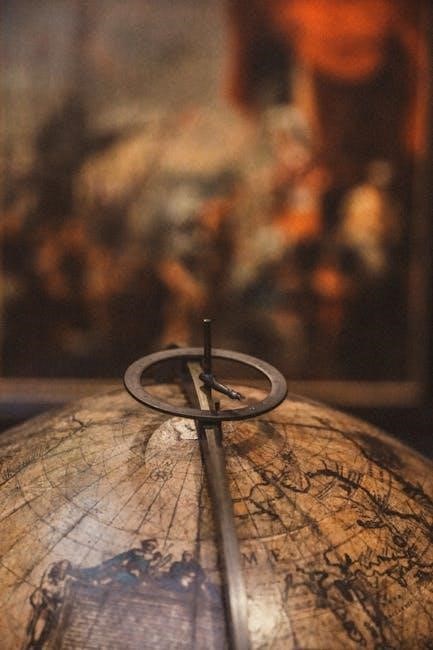
Modern History
Modern History encompasses transformative periods, including industrialization, technological advancements, and global conflicts, shaping societies and economies worldwide.
6.1 The Industrial Revolution and Its Effects
The Industrial Revolution, beginning in the late 18th century, marked a pivotal shift from manual production to machine-based manufacturing. It originated in Britain, driven by inventions like the steam engine and spinning jenny. This period transformed industries such as textiles, mining, and transportation, while fostering urbanization and technological progress. The revolution had profound societal effects, including the growth of a factory-based workforce and the rise of capitalism. However, it also led to environmental degradation and labor exploitation. The Industrial Revolution laid the foundation for modern industrial society, connecting global economies and reshaping daily life. Its legacy remains evident in contemporary technological advancements.
6.2 World Wars and Their Global Consequences
World Wars I and II were defining events of the 20th century, reshaping global politics, economies, and societies. The First World War (1914–1918) arose from imperial tensions and nationalism, leading to massive casualties and the collapse of empires. The Second World War (1939–1945) saw the rise of fascism and resulted in unprecedented devastation, including the Holocaust. Both wars spurred technological advancements but also caused economic crises and social upheaval. The aftermath led to the formation of the United Nations and the Cold War. These conflicts underscored the fragility of peace and the need for international cooperation, leaving lasting impacts on global security and governance.

Contemporary History
Contemporary history covers events from the late 20th century to the present, including the Cold War’s end, globalization, technological advancements, and their profound societal impacts globally.
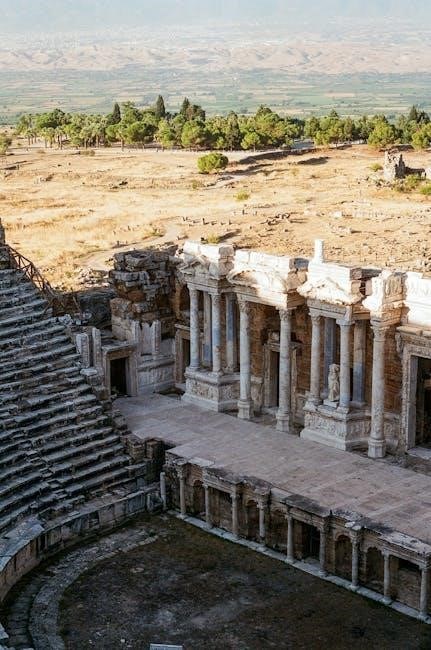
7.1 The Cold War and Its Legacy
The Cold War (1947–1991) was a geopolitical rivalry between the United States and the Soviet Union, marked by an arms race, ideological tensions, and proxy conflicts. It shaped global politics, economies, and cultures. The era saw the rise of nuclear deterrence, the space race, and events like the Cuban Missile Crisis. The fall of the Berlin Wall in 1989 symbolized its end, leading to the dissolution of the Soviet Union in 1991. Its legacy includes the formation of NATO, the rise of communist movements, and enduring ideological divides. The Cold War profoundly influenced modern international relations and global security frameworks.
7.2 Globalization and Its Influence on Modern Society
Globalization, accelerating in the late 20th century, refers to the increasing interconnectedness of the world through technology, trade, and cultural exchange. It has fostered economic interdependence, with multinational corporations and global supply chains reshaping industries. The internet and digital communication have bridged distances, enabling instant connectivity. Culturally, globalization has spread Western media, consumerism, and ideas, while also promoting diversity by exposing societies to varied traditions. However, it has also sparked debates over inequality, cultural homogenization, and environmental impacts. Globalization continues to shape modern society, influencing politics, economies, and individual identities, making it a defining feature of the 21st century.
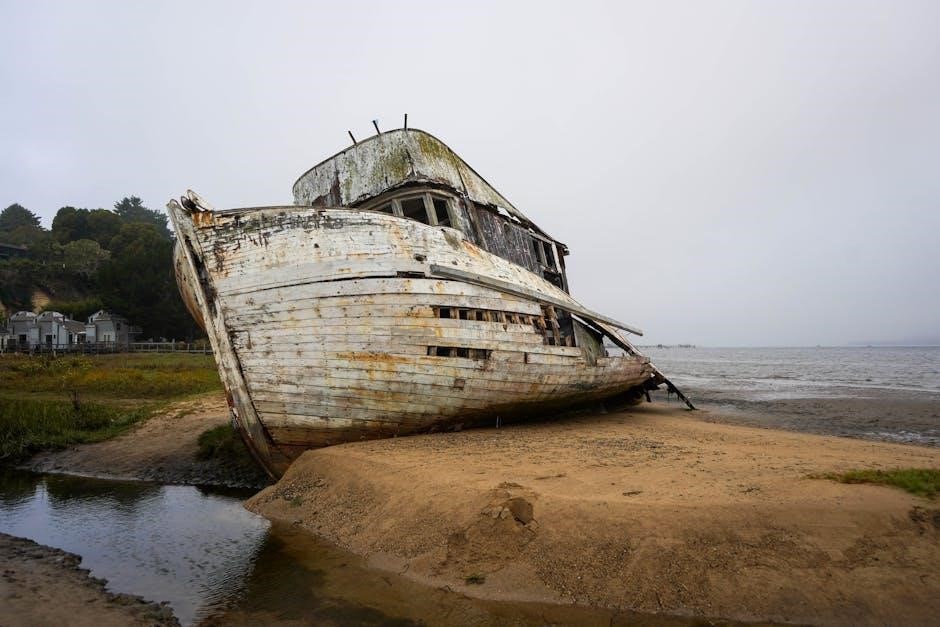
Digital Resources for Historical Timelines
Explore comprehensive digital tools and historical timelines in PDF formats, offering detailed insights into world history, accessible for educational and research purposes online.
8.1 PDF Documents and Their Accessibility
PDF documents are a popular medium for presenting historical timelines due to their universal compatibility and ease of access. They can be easily downloaded and viewed on various devices, making them ideal for educational purposes. Many historical timelines in PDF format are available online, offering detailed chronological overviews of major world events. These documents often include visually engaging layouts, with clear divisions by era or region. PDFs are particularly beneficial for offline access, allowing users to study timelines without internet connectivity. Furthermore, they can be shared and printed conveniently, making them a versatile resource for both researchers and educators. Their widespread availability ensures that historical knowledge remains accessible to a broad audience.
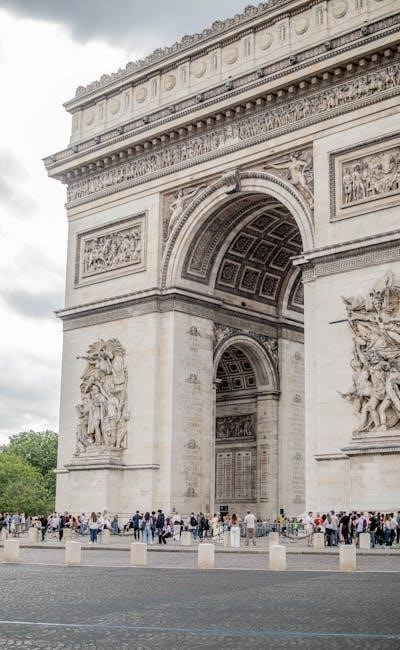
8.2 Online Platforms for Historical Research
Online platforms have revolutionized access to historical research, offering comprehensive tools for exploring timelines and events. Websites like Google Scholar and JSTOR provide scholarly articles and primary sources, while platforms such as Timeline JS enable users to create interactive historical timelines. The British Museum and BBC History websites offer well-curated content, including timelines and multimedia resources. These platforms often feature search filters, allowing users to narrow down information by time periods or regions. Additionally, many platforms incorporate visual aids like maps and charts to enhance understanding. Such resources are invaluable for researchers, educators, and students, fostering a deeper engagement with world history in a digital age.

